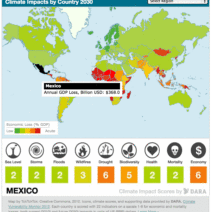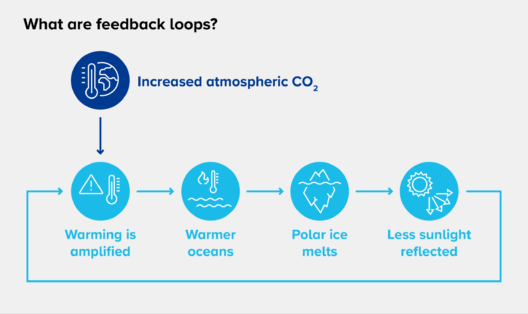As the world simultaneously faces unprecedented environmental degradation and a growing awareness of climate change, it becomes increasingly vital to explore practical steps that can effectively mitigate its impacts. A common observation is that while climate change affects everyone, the measures required to combat it often appear daunting or unattainable to the average individual. However, several actionable strategies can empower communities and promote sustainable practices that extend beyond mere tokenism. Herein, we outline ten pragmatic initiatives that underpin our collective responsibility in reversing the course of climate change.
1. Transition to Renewable Energy
A paradigm shift towards renewable energy sources such as solar, wind, and hydroelectric power represents one of the most critical steps to mitigate climate change. Fossil fuels continue to dominate global energy consumption, resulting in elevated greenhouse gas emissions. By advocating for and investing in alternative energy infrastructure, individuals and communities can reduce reliance on carbon-intensive sources. This transition not only curtails emissions but also fosters energy independence and resilience within local economies.
2. Implement Energy Efficiency Improvements
Enhancing energy efficiency across residential, commercial, and industrial sectors is paramount. Simple changes, such as upgrading to LED lighting, improving insulation, and utilizing energy-efficient appliances, can lead to substantial reductions in energy consumption. Governments can incentivize these improvements through rebates and tax credits, thereby encouraging widespread adoption. The cumulative effect of such practices supports a dual goal: reducing energy bills while concurrently diminishing carbon footprints.
3. Promote Sustainable Transportation
Transportation is a significant contributor to greenhouse gas emissions, primarily due to the prevalence of gasoline and diesel vehicles. To mitigate this, it is essential to advocate for alternative modes of transportation, including public transit, cycling, walking, and electric vehicles (EVs). Infrastructure improvements, such as the expansion of bike lanes and public transit systems, can facilitate a shift away from solitary automobile travel. Additionally, supporting policies that encourage EV adoption—such as charging station installations—will facilitate a significant reduction in transportation-related emissions.
4. Support Local Agriculture and Sustainable Food Systems
The food system is deeply entwined with climate change dynamics. Large-scale, industrial farming practices contribute heavily to deforestation, soil degradation, and emissions through fertilizers and livestock. Supporting local agriculture and sustainable food systems ensures food is grown with respect for ecosystems and minimizes transport emissions. Community-supported agriculture (CSA), farmers’ markets, and organic farms embody practicality in sustainable food sourcing, reducing reliance on chemically intensive industrial agriculture.
5. Advocate for Waste Reduction and Recycling
Waste management is often overlooked in the context of climate change; however, landfills are significant sources of methane, a potent greenhouse gas. By advocating for stringent waste reduction policies, including comprehensive recycling programs and composting initiatives, communities can transition towards circular economies. Reducing single-use plastics, promoting reusable products, and educating the public on waste diversion strategies are essential steps in enhancing overall waste management efficacy.
6. Foster Urban Green Spaces
Urbanization presents unique challenges regarding climate resilience, necessitating the integration of green spaces within city planning. Parks, green roofs, and urban gardens contribute to carbon sequestration and habitat restoration. They also help mitigate urban heat island effects while enhancing community health and well-being. By pressing for the preservation and development of urban green areas, communities can fortify their climate strategies and bolster mental and physical health among residents.
7. Engage in Climate Education and Advocacy
An informed populace is integral to successfully addressing climate change. Encouraging educational initiatives that impart knowledge about climate systems and sustainability fosters a culture of environmental stewardship. Community workshops, school programs, and public awareness campaigns can mobilize citizens and inspire them to take individual and collective action. Advocacy for clear policy changes at local, state, and national levels is crucial for driving systemic change.
8. Enhance Water Conservation Practices
As climate change affects water availability, adopting robust water conservation practices is essential. Simple measures, such as implementing rainwater harvesting systems, fixing leaks, and utilizing drought-resistant landscaping, can significantly reduce water usage. In agricultural contexts, innovative irrigation techniques—such as drip irrigation—can optimize water efficiency while also promoting food security amidst changing weather patterns.
9. Protect Biodiversity and Ecosystem Restoration
Preventing biodiversity loss is a crucial yet sometimes neglected aspect of climate change mitigation. Healthy ecosystems not only offer critical services, such as carbon storage and water purification, but also promote resilience to climate stresses. Investing in conservation programs and ecosystem restoration initiatives can help revitalize degraded habitats, fostering a rich diversity of flora and fauna essential to maintaining ecological balance.
10. Advocate for Sustainable Corporate Practices
Corporate accountability plays an undeniable role in tackling climate change. Advocating for businesses to adopt sustainable practices—such as reducing emissions, utilizing recyclable materials, and embracing transparent supply chains—can catalyze industry-wide transformation. Supporting brands that prioritize sustainability empowers consumers to drive demand for eco-friendly products and practices.
Mitigating climate change mandates decisive action rooted in individual and collective responsibility. By implementing these ten practical steps, we can navigate the complexities of climate challenges while fostering a sustainable future. The urgency to act is not merely an aspect of political discourse but a categorical imperative we must embrace to safeguard our planet for generations to come.





